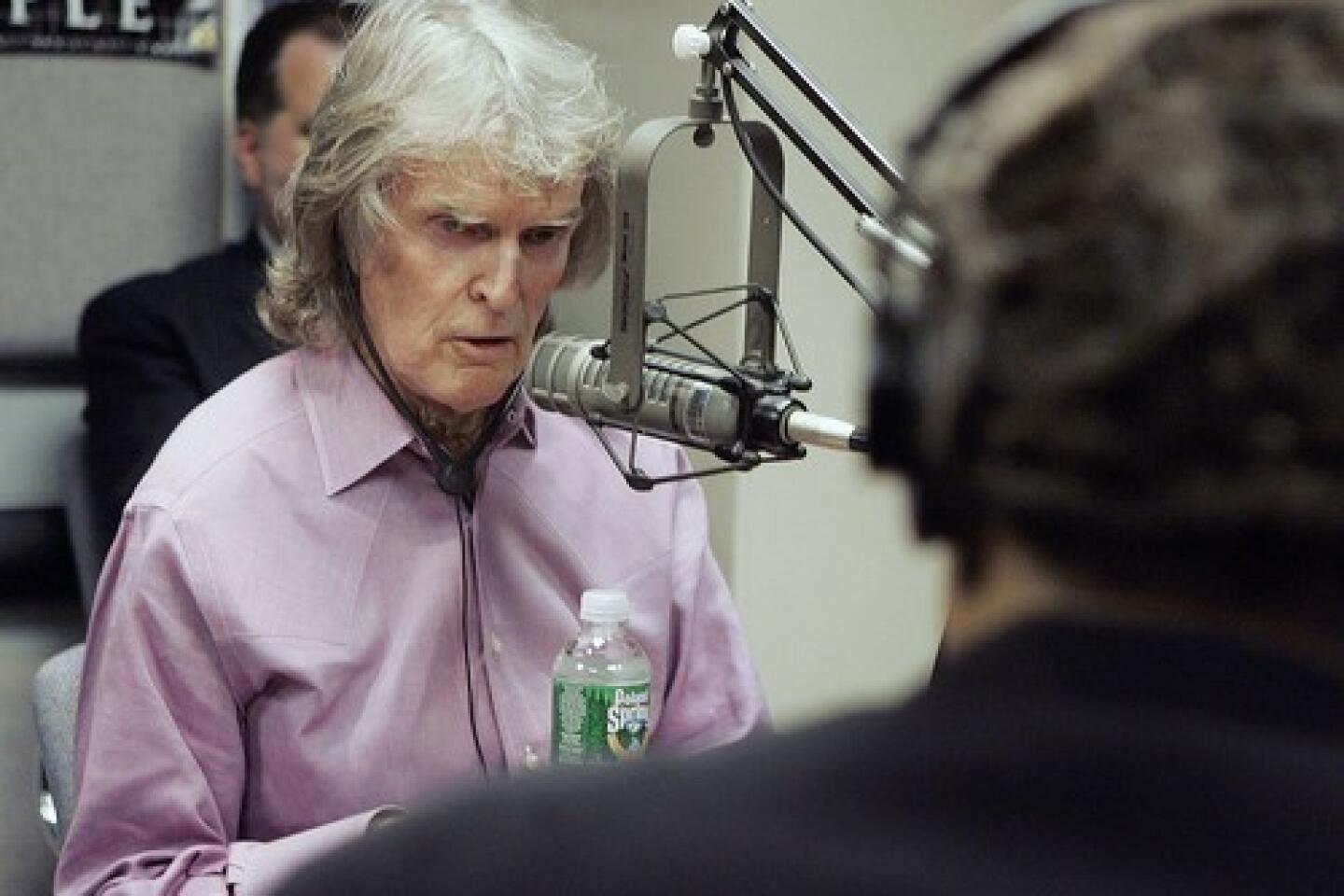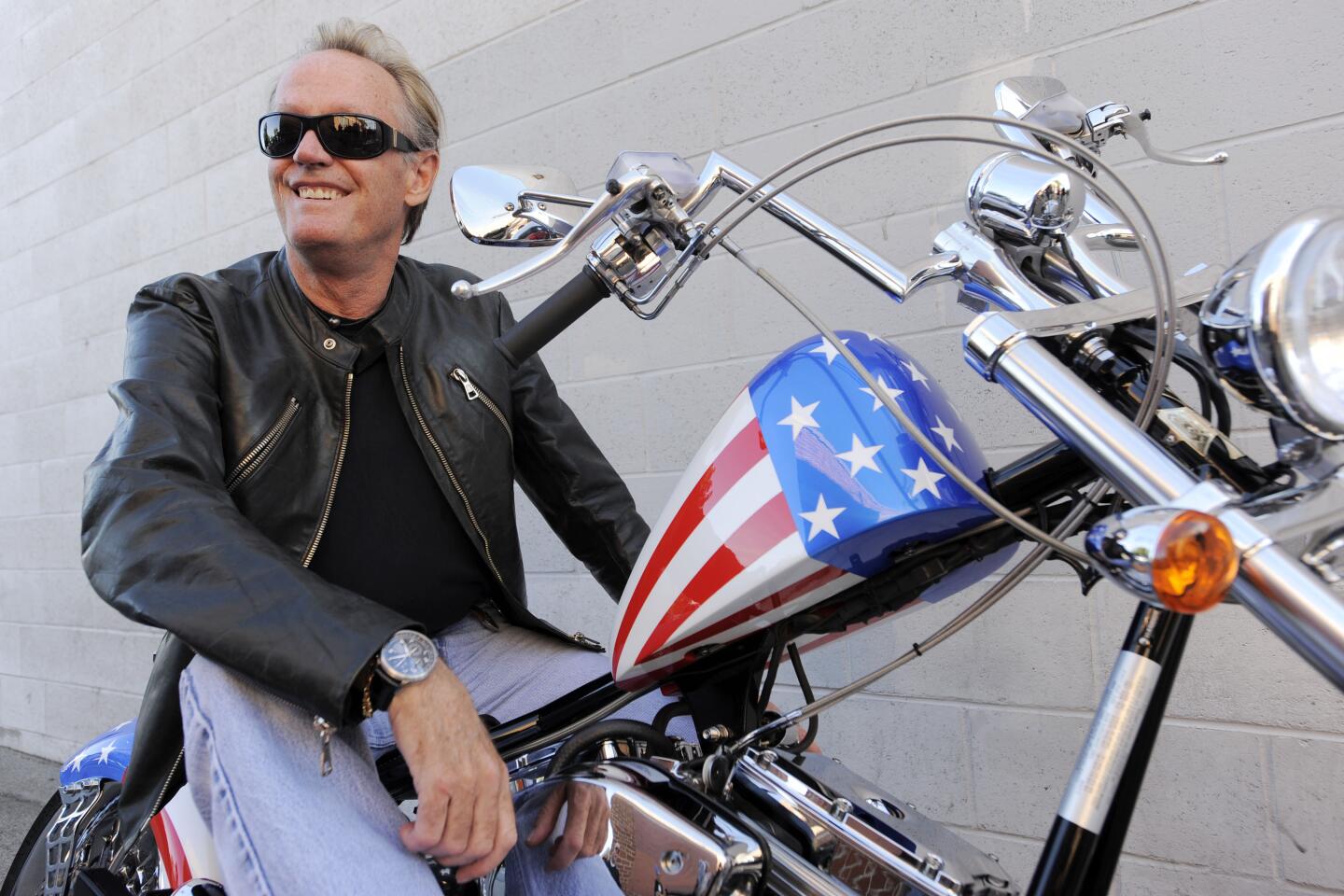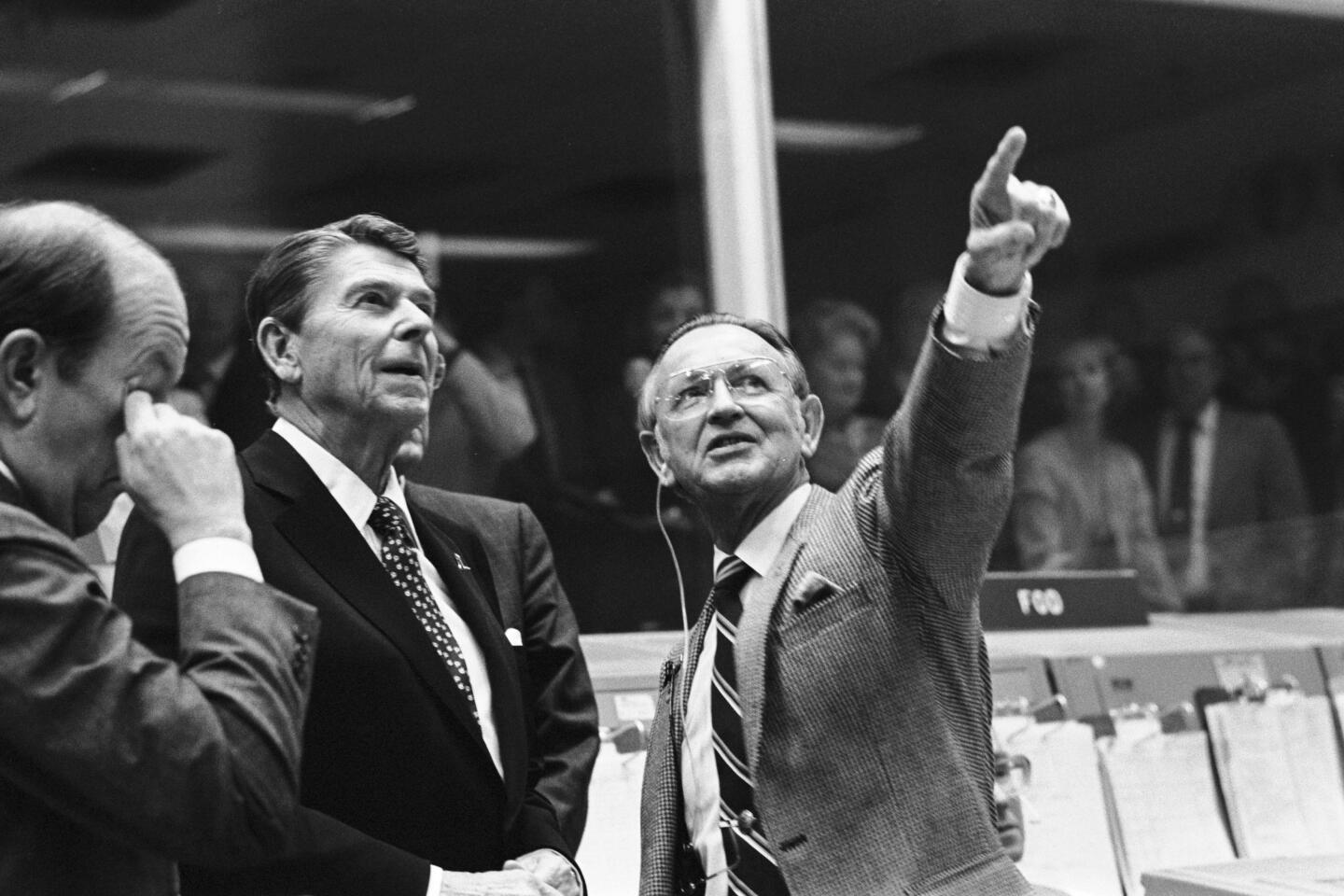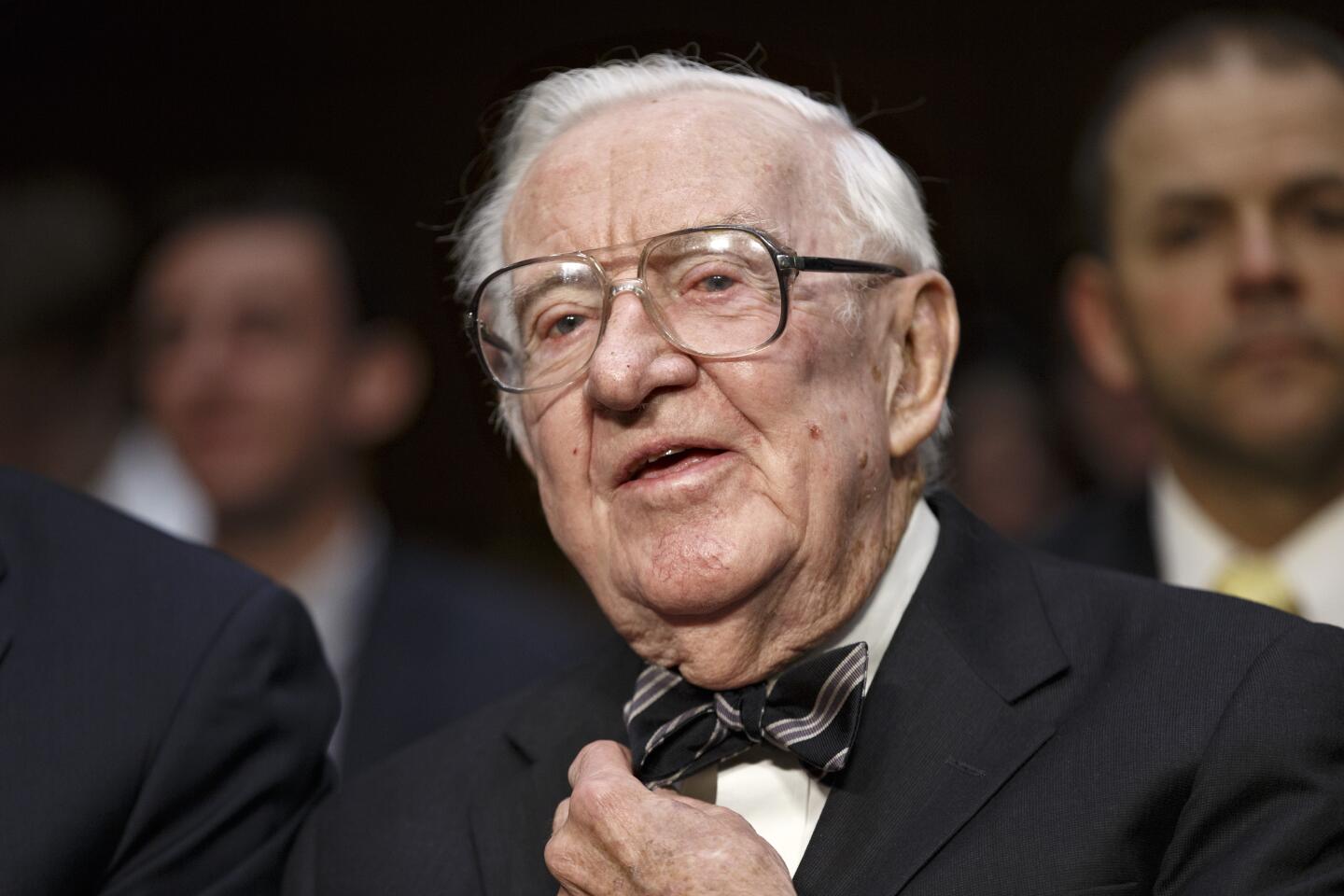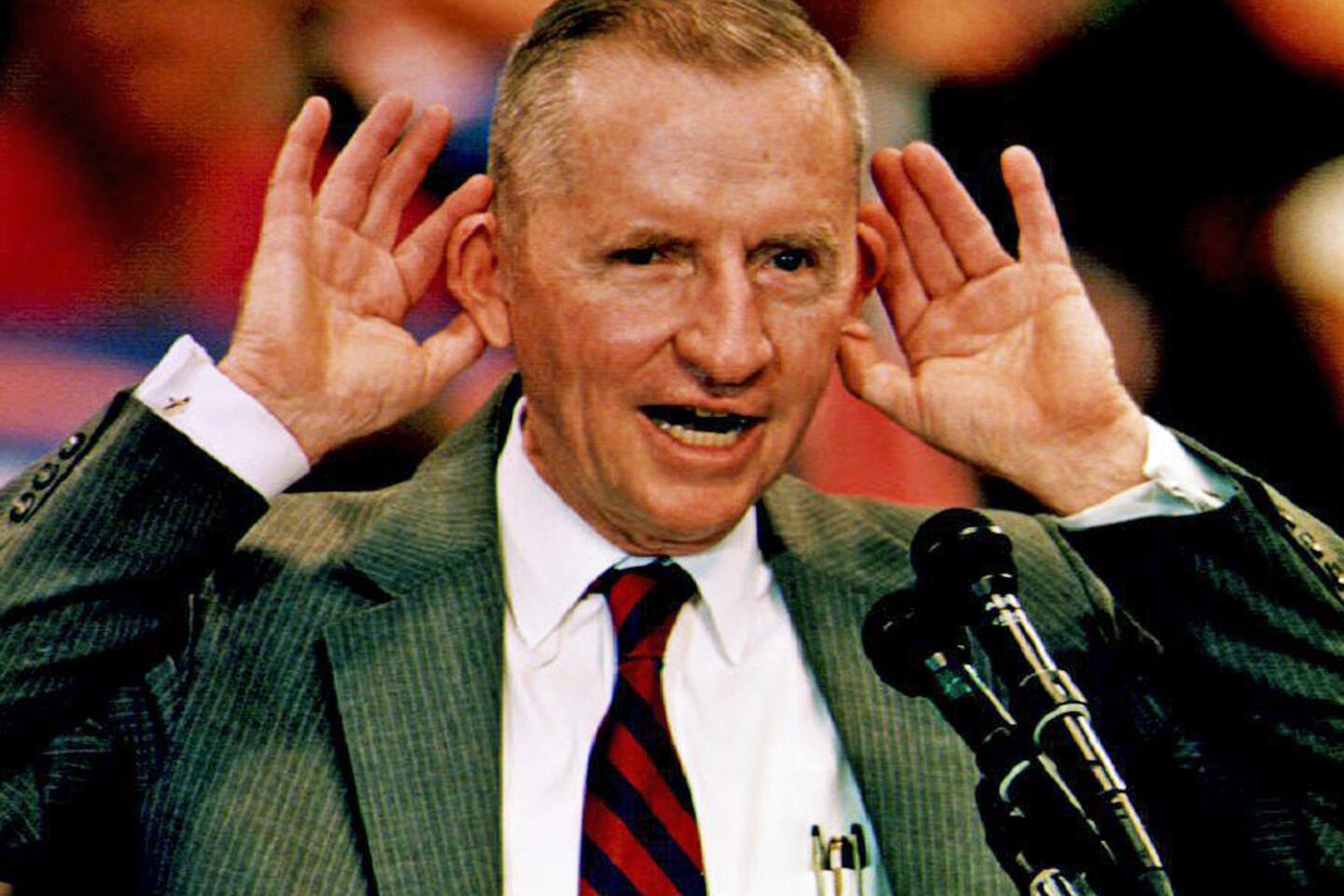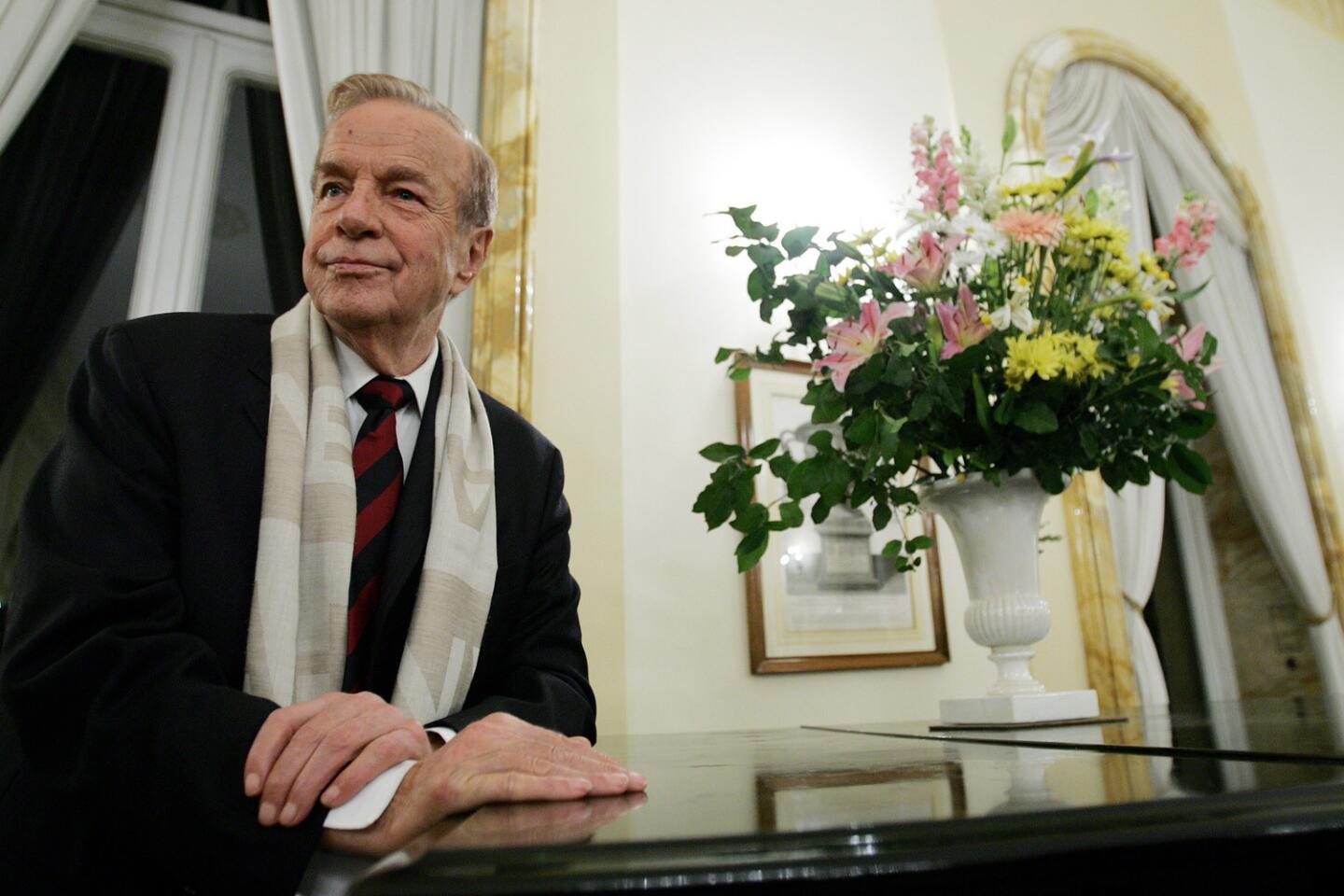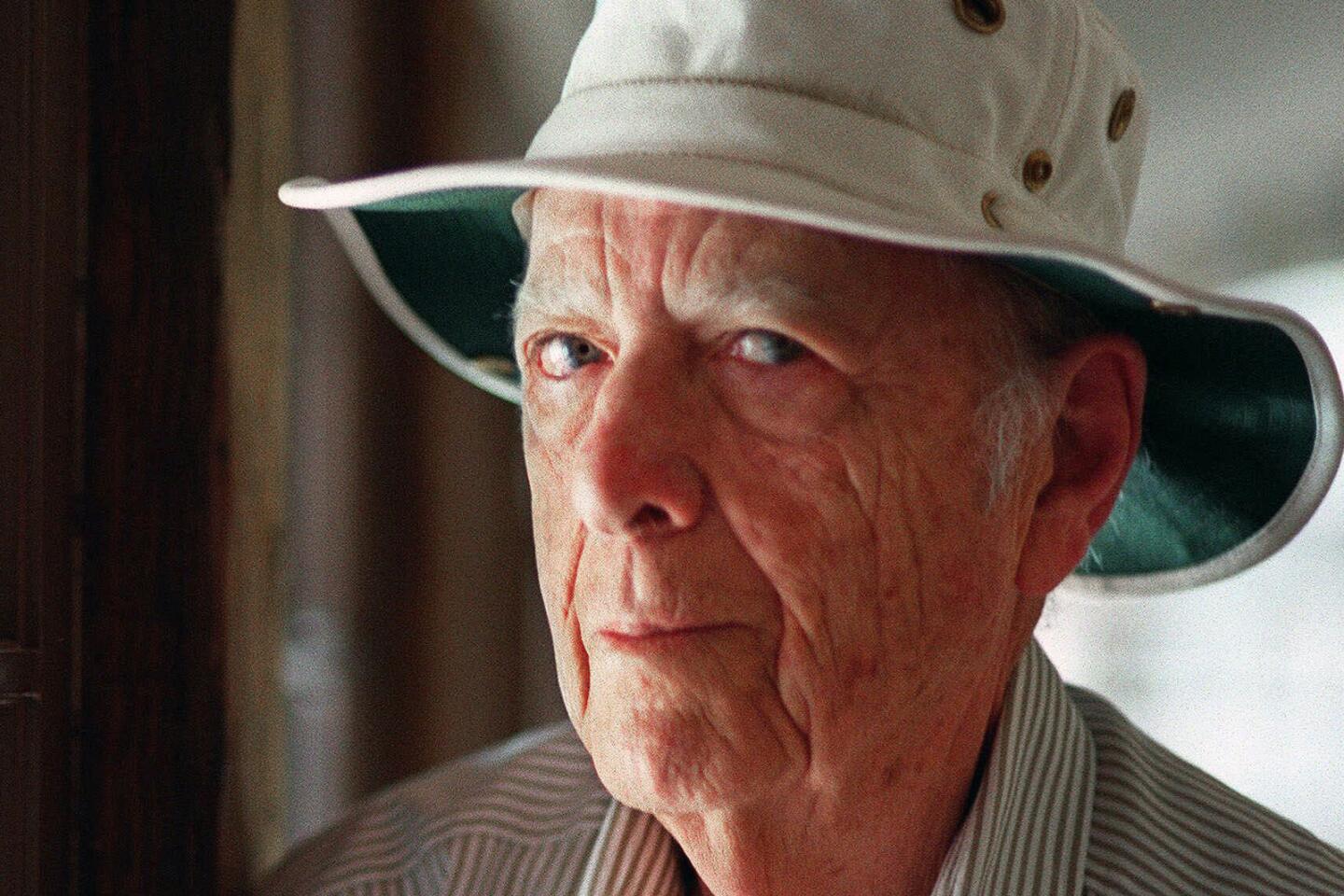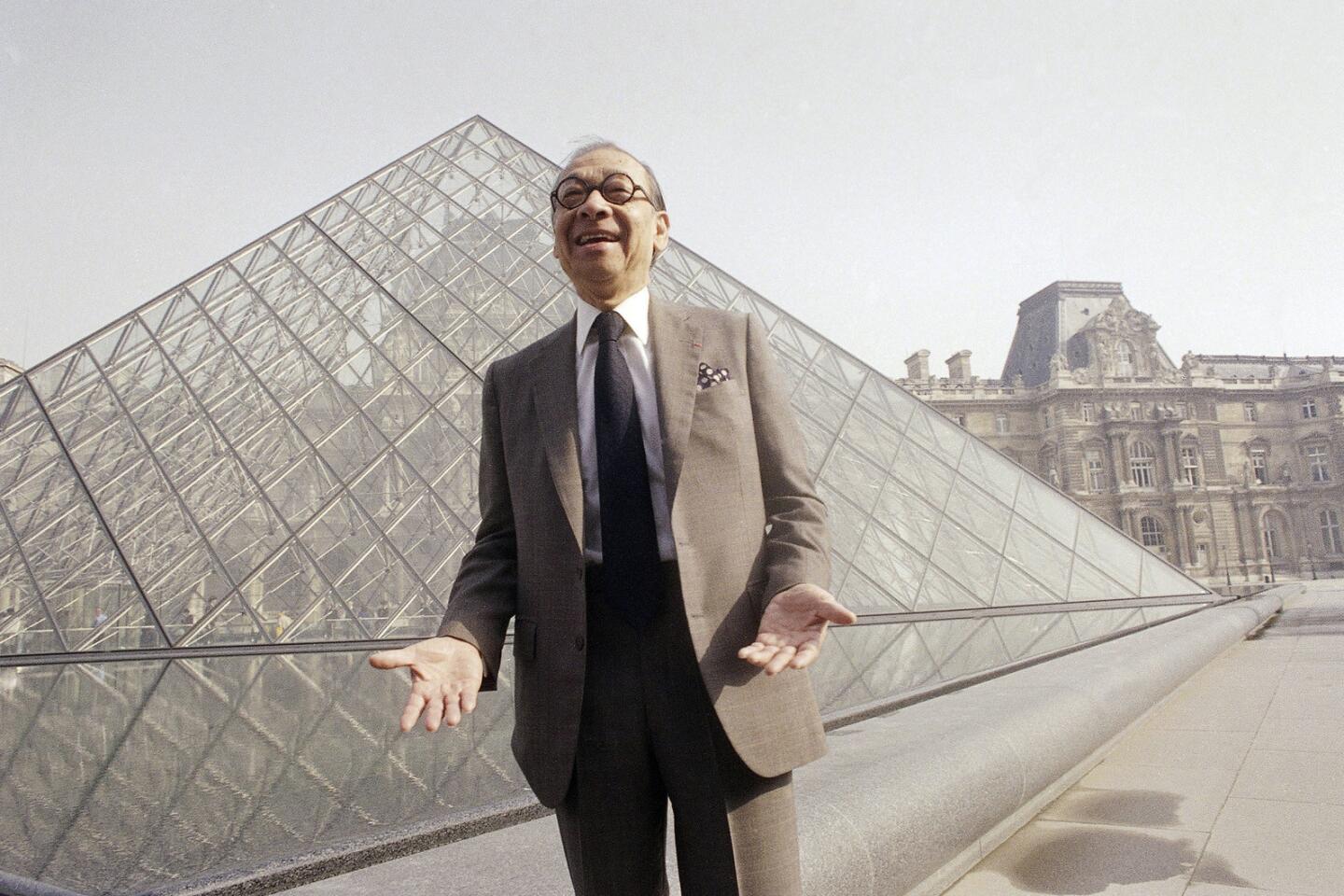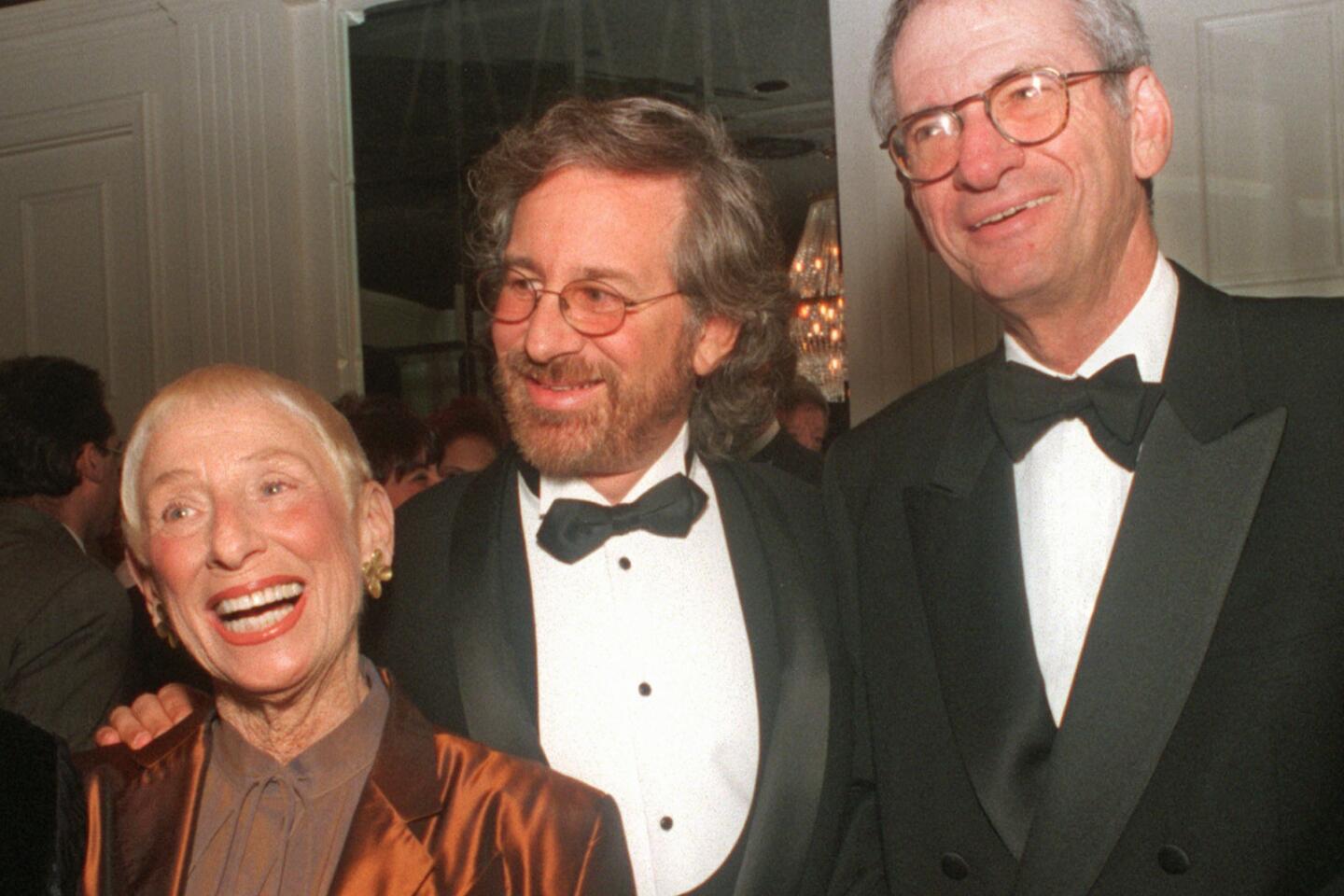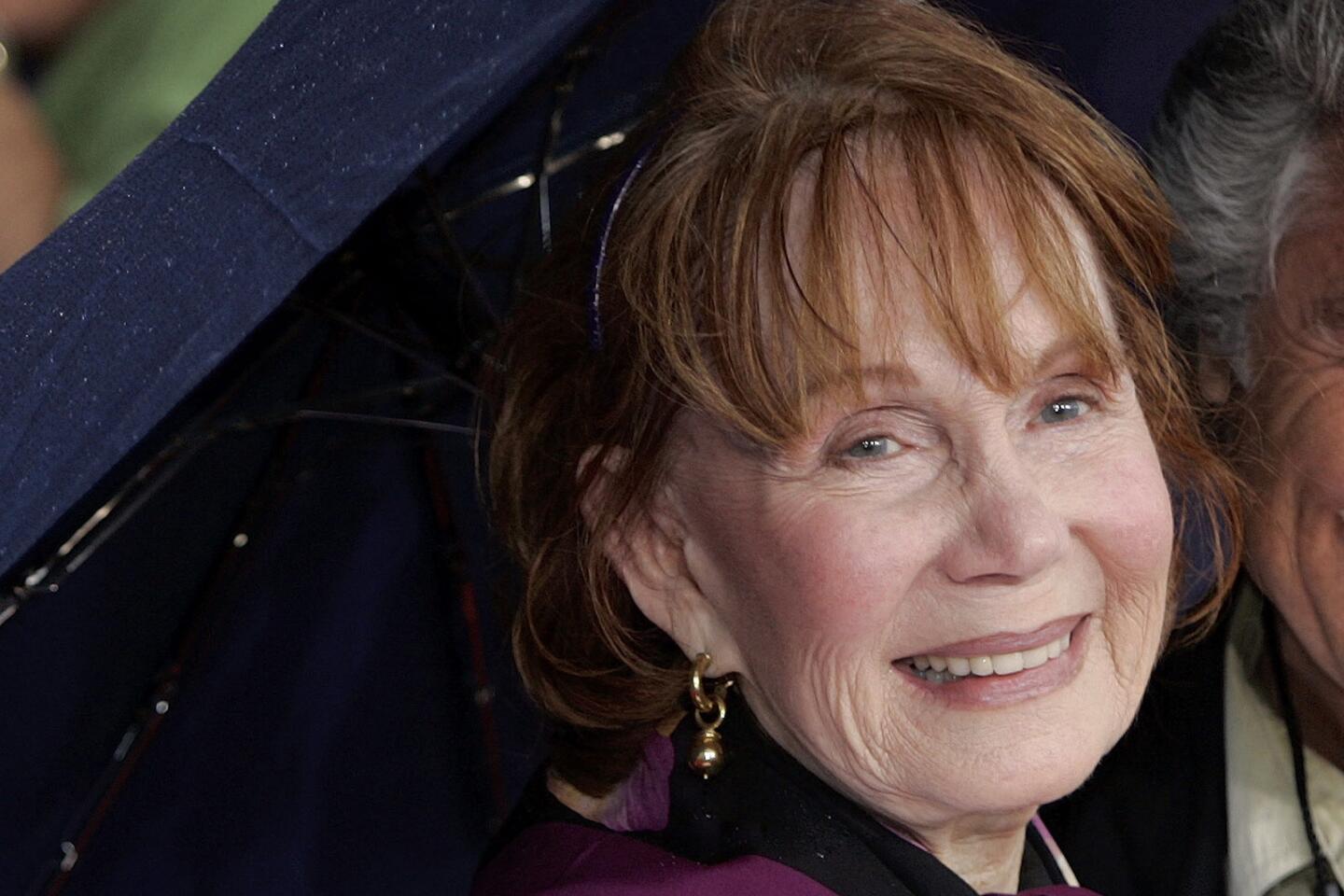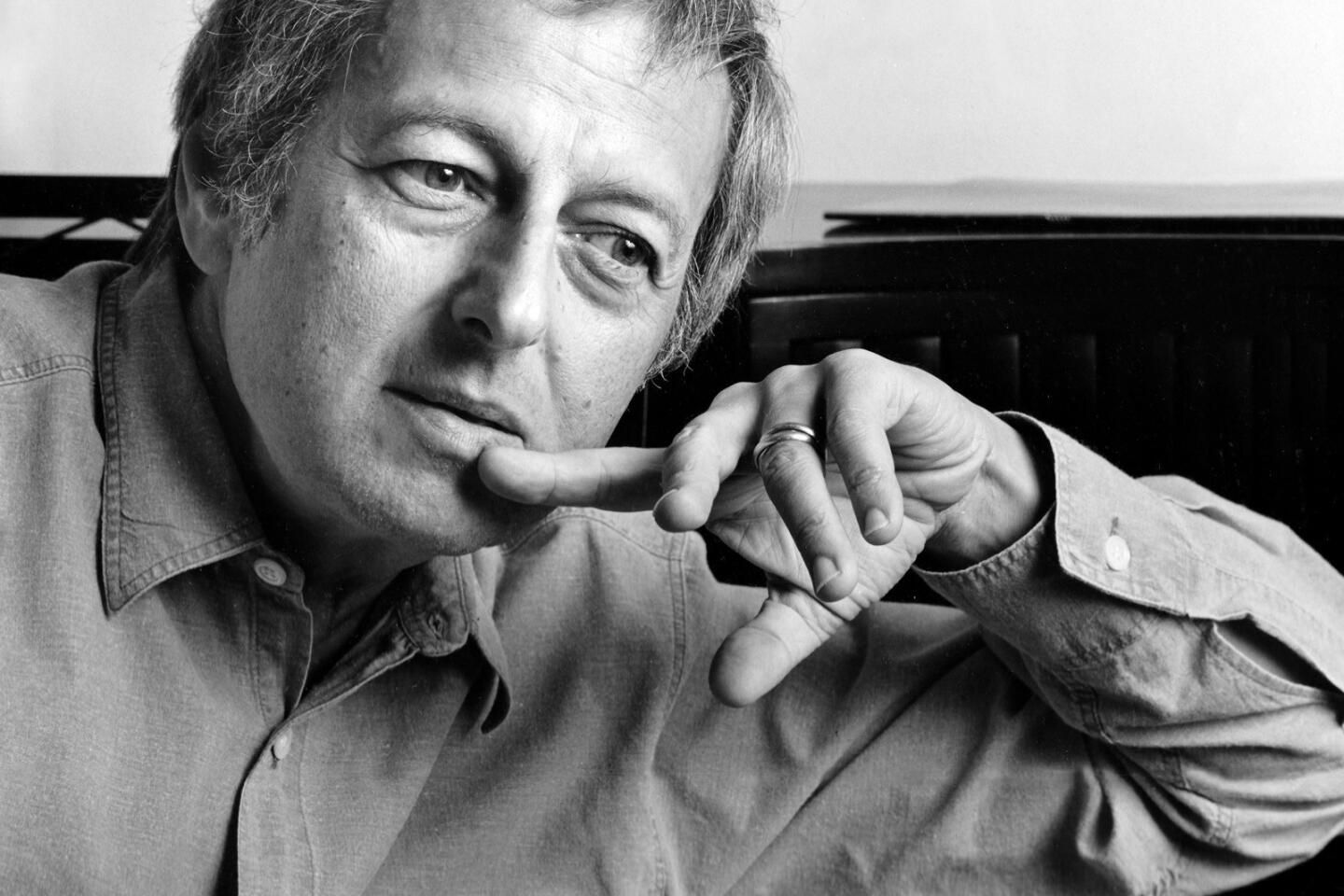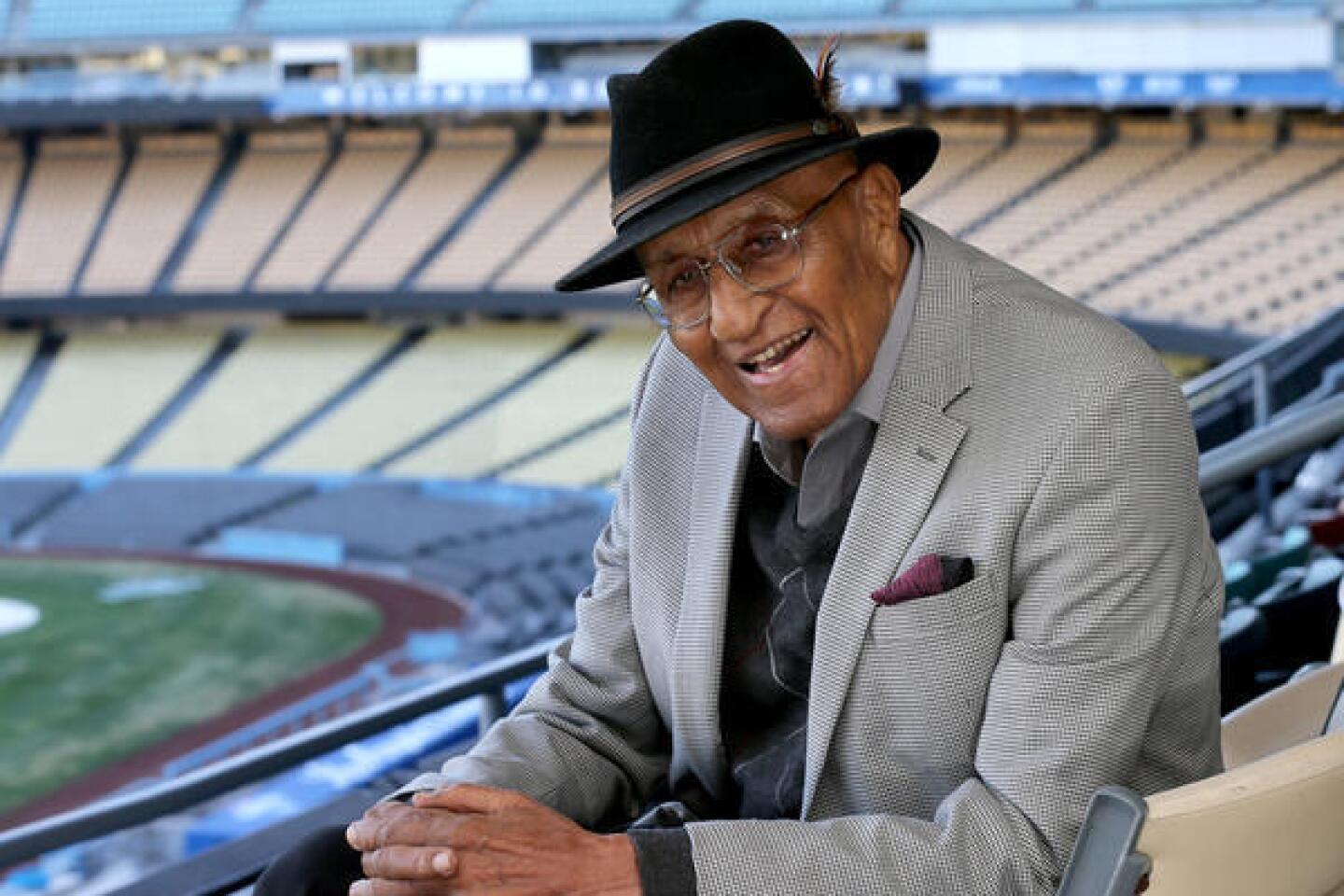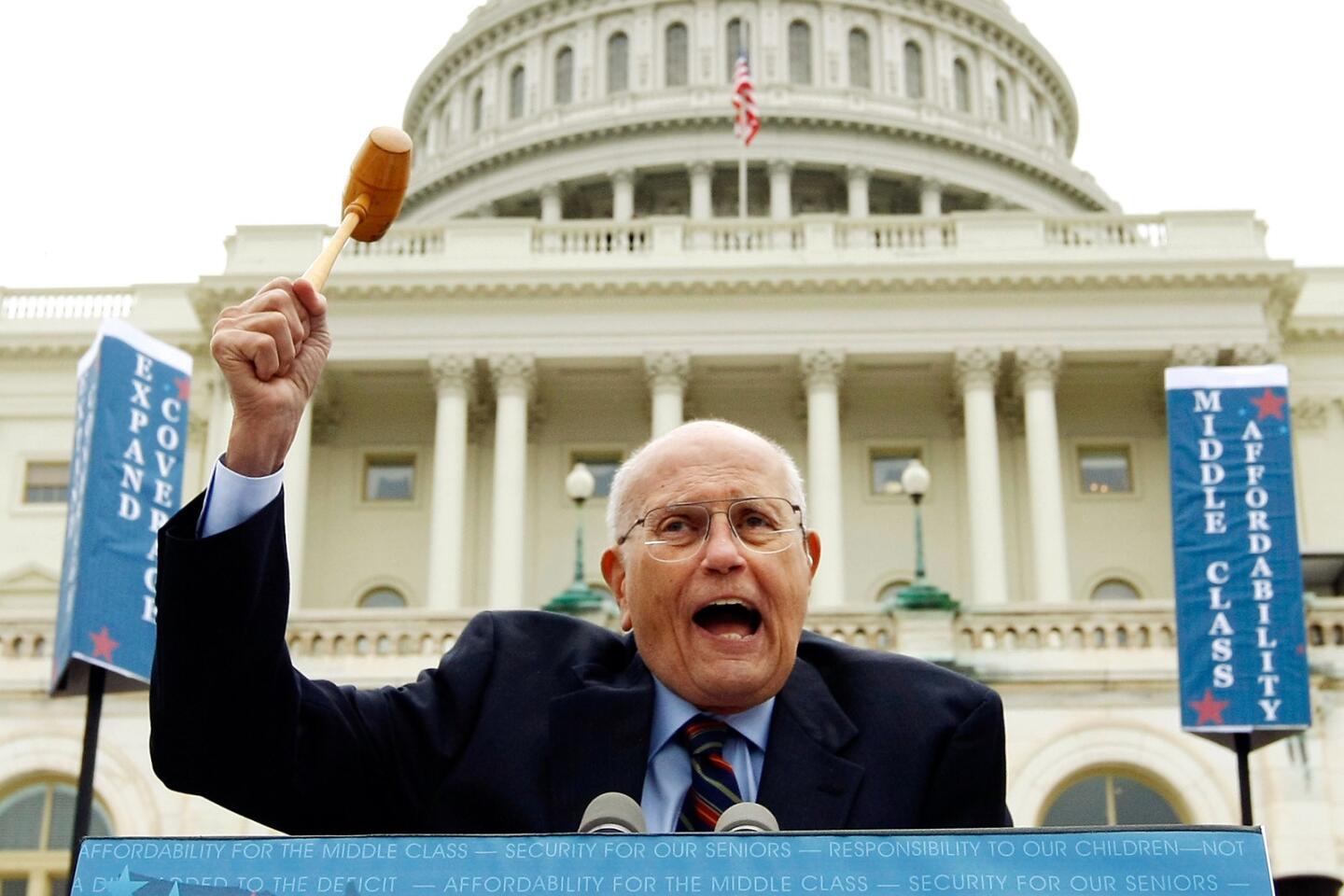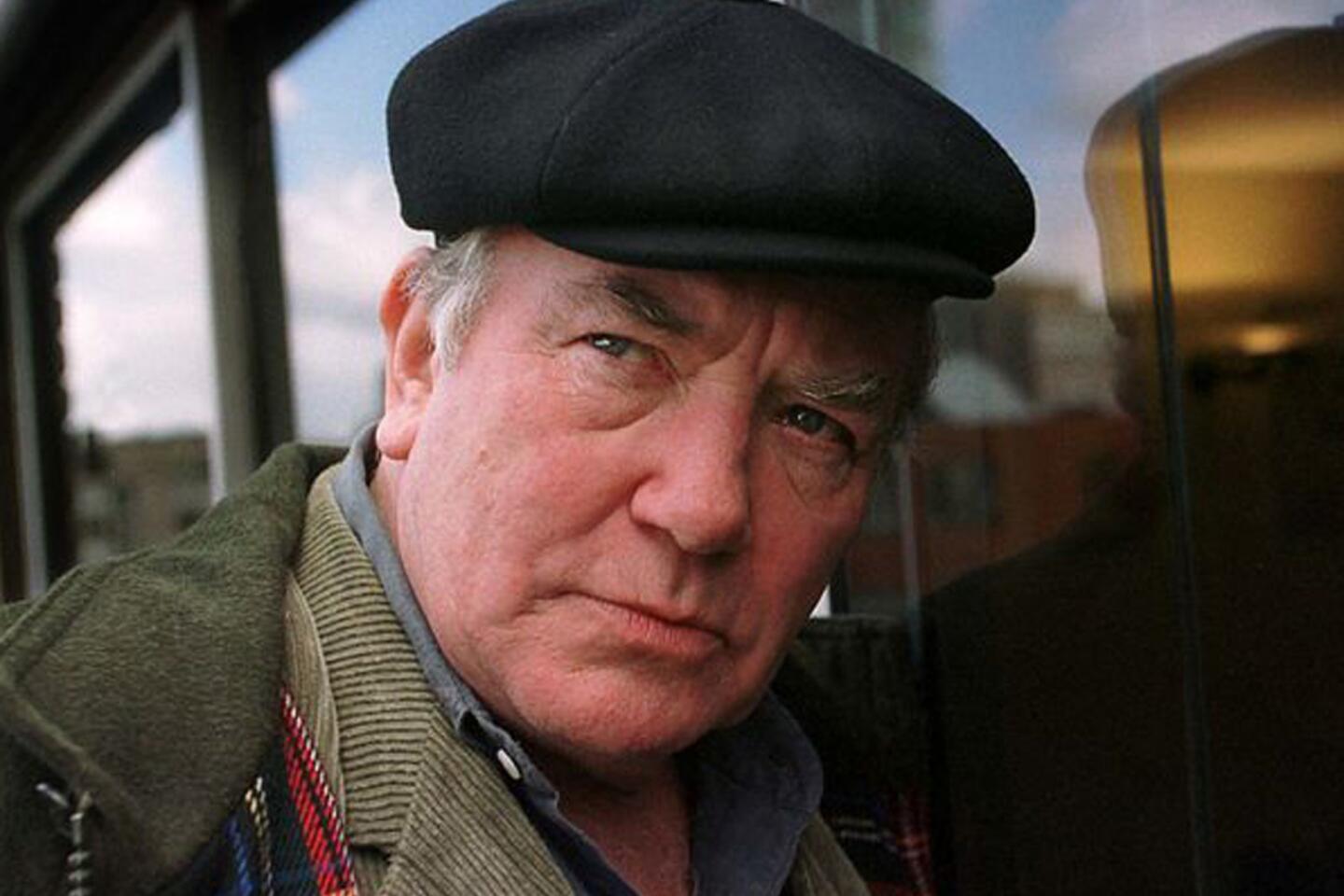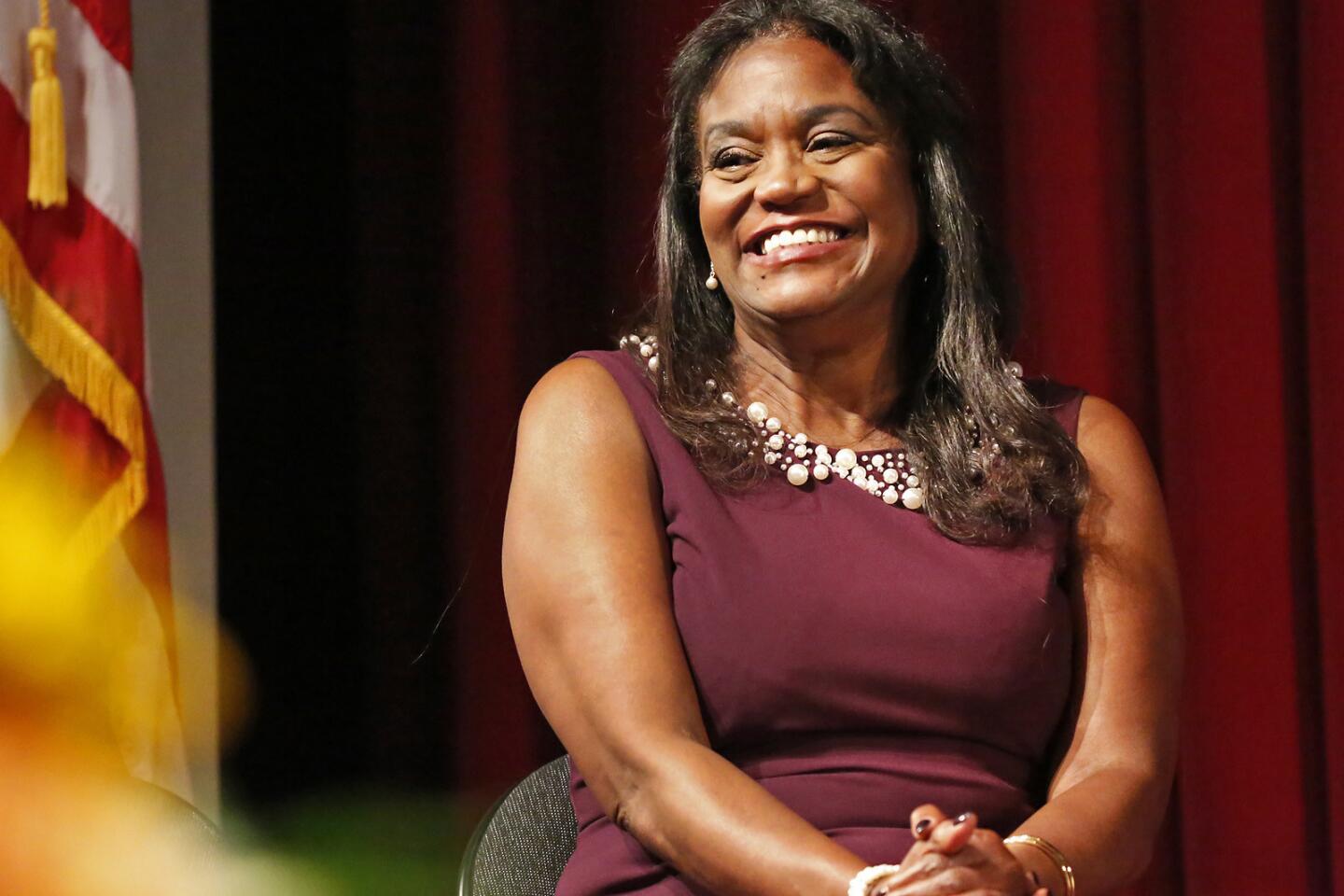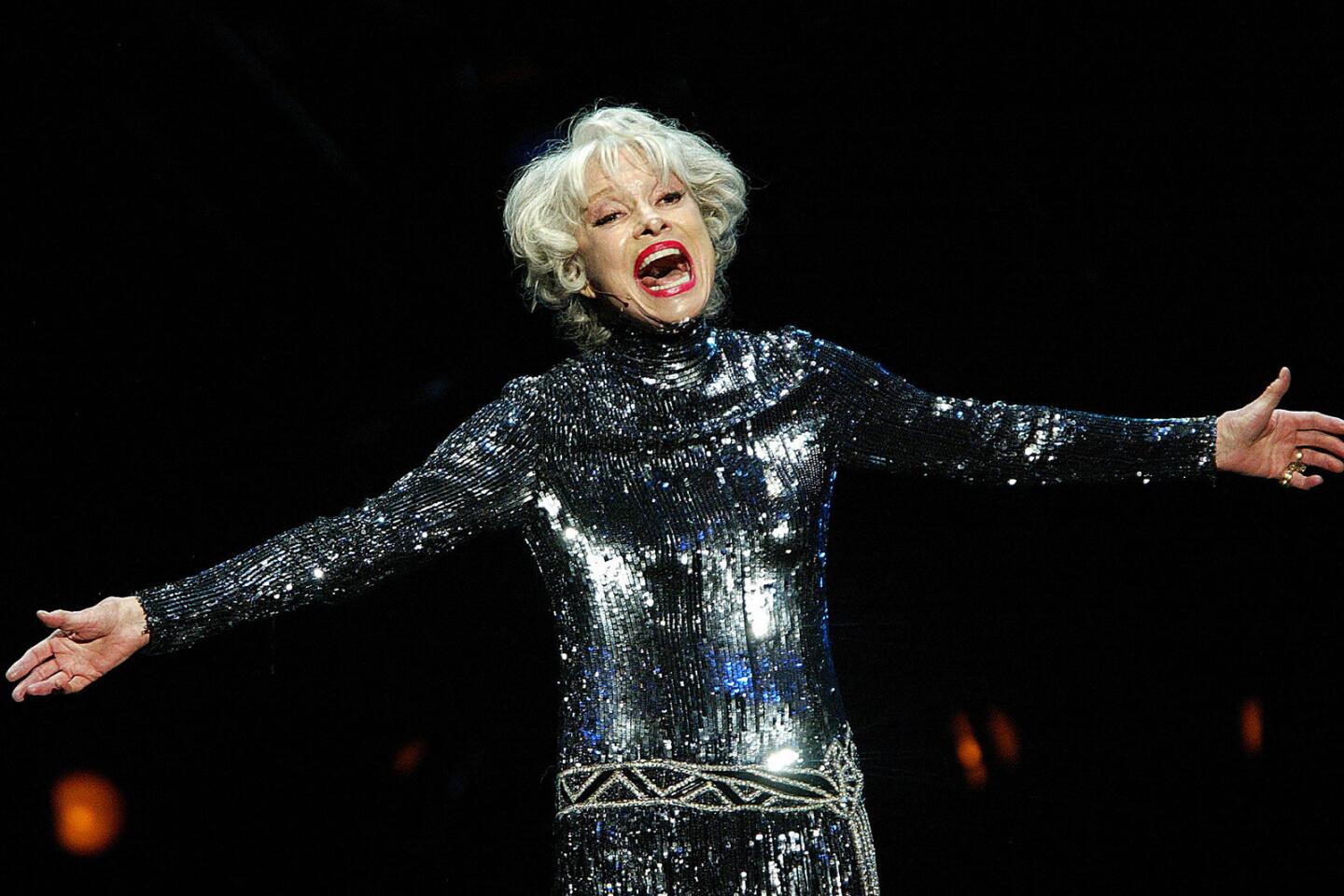Stanley Donen, co-director of ‘Singin’ in the Rain,’ dies at 94
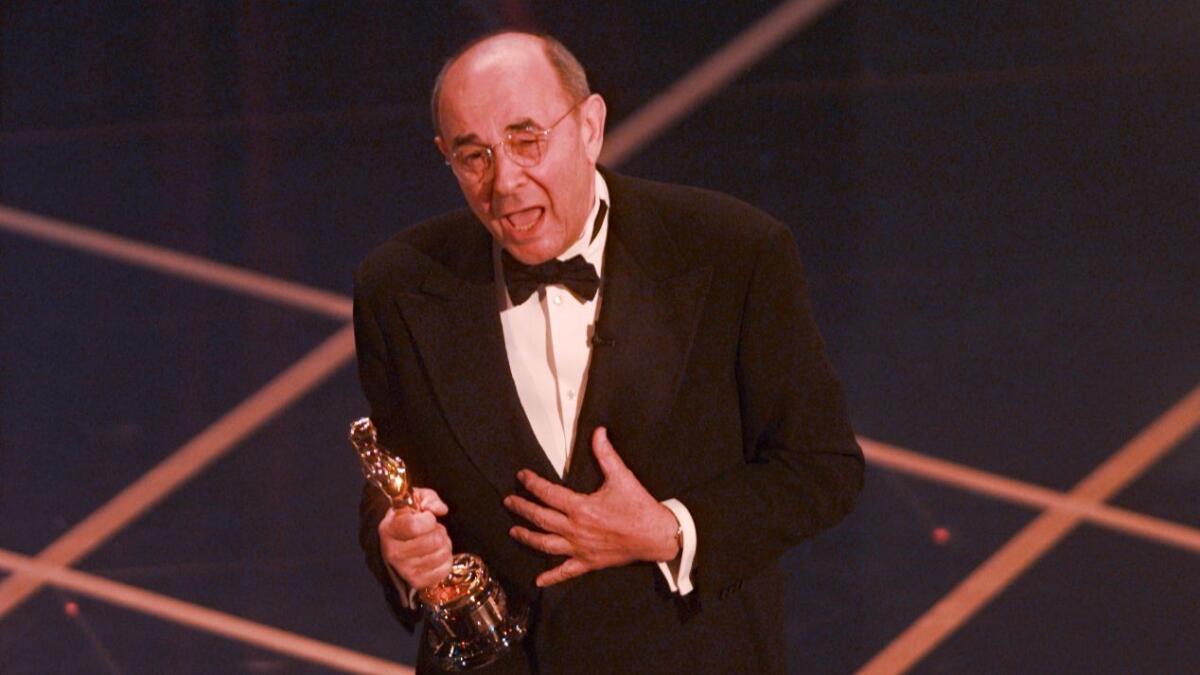
- Share via
Stanley Donen, who directed or co-directed some of Hollywood’s best-known movie musicals, including “On the Town,” “Royal Wedding” and what many consider the greatest movie musical of all time, “Singin’ in the Rain,” has died. He was 94.
Donen, a master of filming dance with imagination and style and a director whose nonmusical credits include “Charade,” “Indiscreet” and “Two for the Road,” died of an apparent heart attack Thursday, his sons Joshua and Mark Donen confirmed Saturday.
A onetime Broadway chorus boy whose film career was launched in the 1940s, Donen name was inextricably linked with MGM and its athletic dancing star Gene Kelly.
At age 19, he assisted Kelly on the dance numbers for the 1944 movie musical “Cover Girl,” for which Donen conceived and directed (uncredited) the “Alter Ego” double-exposure number in which Kelly danced with his window reflection after it leapt off the windowpane.
A year later, Donen came up with the equally innovative idea of having Kelly dance with Jerry, MGM’s cartoon mouse, in director George Sidney’s 1945 musical “Anchors Aweigh.”
“I get all the credit for this, but it would have been impossible for me to do without Stanley,” Kelly told Donen biographer Stephen M. Silverman. Donen, Kelly said, “worked with the cameramen and called the shots in all these intricate timings and movements.”
At just 25, Donen made his directorial debut with “On the Town.”
Co-directed by Kelly, the 1949 musical memorably left the confines of the studio for its spectacular opening number, “New York, New York.” It was shot on location in New York City as three sailors — Kelly, Frank Sinatra and Jules Munshin — set out on a 24-hour leave in the Big Apple.
In general, Donen once explained, Kelly “was responsible for most of the dance movements [in the film]. I was behind the camera in the dramatic and musical sequences.”
Donen made his solo directing debut with “Royal Wedding,” a 1951 musical in which Fred Astaire famously danced up the walls and across the ceiling — a breathtaking effect created by attaching the camera to the base of a large revolving steel-reinforced cylindrical chamber containing the hotel-room set.
More than three decades later, Donen directed a similar gravity-defying number for the music video of Lionel Richie’s hit “Dancing on the Ceiling.”
Among Donen’s other movie musicals: “Seven Brides for Seven Brothers” (1954), “Funny Face” (1957), “The Pajama Game” (1957, co-directed by George Abbott) and “Damn Yankees” (1958, co-directed by Abbott).
But it is “Singin’ in the Rain,” the exuberant 1952 classic co-directed by Donen and Kelly that is, in the words of the late New Yorker magazine film critic Pauline Kael, “perhaps the most enjoyable of all movie musicals — just about the best Hollywood musical of all time.”
A satirical tale about Hollywood’s transition from silent films to talkies, “Singin’ in the Rain” co-starred Kelly, Donald O’Connor and Debbie Reynolds.
The film featured many memorable song and dance numbers, including O’Connor’s stand-out pratfall routine “Make `Em Laugh,” and, of course, Kelly’s joyous expression of being in love by singing — and dancing — in the rain.
In “Dancing on the Ceiling: Stanley Donen and His Movies,” Silverman’s 1996 biography, Donen said that neither he nor Kelly “knew it was going to be such a great number.”
“It only took a day and a half to shoot,” he recalled. “We covered the entire East Side Street on [MGM’s] Lot Two with a black tarpaulin [to simulate nighttime] and designed, to the music, the puddles in the pavement for where Gene would splash around. The rehearsal took place without the rain, which was piped in with sprinklers. We had to finish at a certain time of day because of a water-pressure problem in Culver City.”
Indeed, as Donen explained on another occasion, “The only problem came when the downpour suddenly turned into a drizzle in the late afternoon. It was because Culver City people were watering their lawns.”
In his book, Silverman credits Donen with “changing the face and form of the American movie musical. With the arrival of Donen, musicals snapped to and noticeably came of age, integrating in a naturalistic fashion the elements of song, plot and realistic character motives.”
“Stanley Donen is one of the great builders of the film musical,” Drew Casper, author of “Stanley Donen,” a 1983 critical study of Donen’s films, told The Times in 2004.
“What Stanley did was he created this phenomenon of cine-dance: He explored the possibilities of dance in film and made dance cinematic,” said Casper, the Alma and Alfred Hitchcock professor of American film at the USC School of Cinema-Television. “His dance musicals made a quantum leap from what Astaire had done with the musical at RKO in the `30s.”
Beginning in the late 1950s, Donen made the transition to nonmusical films, directing “Indiscreet,” a 1958 romantic comedy starring Cary Grant and Ingrid Bergman; “Charade,” a witty 1963 romantic thriller starring Grant and Audrey Hepburn; “Arabesque,” a 1966 thriller starring Gregory Peck and Sophia Loren; and “Two for the Road,” a 1967 romantic drama starring Hepburn and Albert Finney.
Among his other credits as director are “Staircase” (1969), “Lucky Lady” (1975), “Movie Movie” (1978) and “Blame It On Rio” (1984), his last feature film. “Love Letters,” the only TV movie he directed, aired in 1999.
A year earlier and only weeks before his 74th birthday, Donen received an honorary Oscar “in appreciation of a body of work marked by grace, elegance, wit and visual innovation.”
His acceptance speech was equally graceful and elegant.
“Tonight, words seem inadequate,” Donen said after briefly thanking the academy’s board of governor’s. “In musicals, that’s when we do a song, so ...”
As the orchestra launched into Irving Berlin’s “Cheek to Cheek” from the Astaire and Ginger Rogers musical classic “Top Hat,” Donen held his golden Oscar to his beaming face, and sang, “Heaven, I’m in heaven.”
He further charmed the audience with a brief tap dance before concluding his speech.
For Donen, a movie-struck Southern boy whose life changed after he first saw Astaire dance on the screen, his Donen’s Oscar moment was heavenly indeed.
Donen (pronounced Dah-nen), was born in Columbia, S.C., on April 13, 1924. The son of a dress shop manager, he was a solitary child.
“It was difficult being a Jew in South Carolina,” he told Newsday in 1998. “You got a lot of negative things said about you; you were not really accepted as one of the guys, or one of the children.”
He found escape at the movies. A major turning point in his life came at age 9 when he saw “Flying Down to Rio,” a 1933 musical featuring Astaire and Rogers in their first on-screen pairing.
Watching the elegant Astaire physically respond to the rhythm of a band and then tap dance in a solo number mesmerized the young Donen, and he returned to the theater for repeated showings of the musical.
“I didn’t have a lot of friends,” he told Newsday. “Maybe because I was a Jew. I didn’t mix with a lot of people. That may be one of the reasons I wanted to dance. It was one of the things I could do without them. Who knows what drives you? But I was interior and removed, and I saw this movie and said I’ve got to learn to do that.”
Donen began taking dance lessons in Columbia, which he supplemented with further training in New York City when he would accompany his father on summer business trips, which included seeing all the Broadway musicals.
After graduating from high school in 1940 at age 16, Donen headed straight to New York. Answering an open cattle call that fall, he was hired for the chorus of “Pal Joey,” the Rodgers and Hart Broadway musical that made Kelly a star.
A year later, when Kelly became the choreographer for the Broadway musical “Best Foot Forward,” he hired Donen as his assistant. Donen also appeared in the chorus of “Best Foot Forward.”
Moving to Hollywood in 1942, he auditioned for the MGM movie version of “Best Foot Forward.” Placed under contract as a studio dancer, he also became assistant to MGM choreographer Charles Walters.
Donen, whose high blood pressure reportedly kept him out of the wartime draft, worked on numerous musicals. And when Kelly, who had become an MGM star, was lent to Columbia studios to costar in the 1944 musical “Cover Girl,” he asked Donen to be his assistant on his dance numbers.
In addition to “On the Town” and “Singin’ in the Rain,” Donen and Kelly co-directed the 1955 musical “It’s Always Fair Weather,” starring Kelly.
“I’ve been asked for years how one co-directs,” Donen told his biographer, “and I have two standard replies. The first is ‘With great difficulty.’ And the second, which I used to joke about, is, ‘If you substitute the word “fight” for ‘co-direct,’ then you have it.’
“It wasn’t always like that with Gene, but it gradually came to be that, and, eventually, it came to be impossible. As for the actual process of ‘co-directing,’ if you both agree, then one of you is redundant. And if you disagree, there’s going to be a battle.”
In his Donen biography, Silverman wrote that Kelly has invariably been credited with staging and choreographing the performers, while Donen was left to the camera.
“No one kept track of exactly into whose domain fell what particular responsibility, but clearly there was not consistently a fifty-fifty collaboration,” Silverman wrote. “Early on, it was Kelly who carried the clout to demand the inclusion of Donen in his studio projects, yet the young overachiever always came through, for Kelly and the studio.”
In his later years, Donen was not known to dwell on his Hollywood past, and he reportedly was a bit surprised whenever he was struck by nostalgic feelings.
“A few years ago, I made a tape of dozens of scenes from my old dance movies for a seminar at Robert Redford’s Sundance Institute,” he told the Seattle Post-Intelligencer in 1990.
But as he watched those scenes, he said, he was so overcome with emotion that he couldn’t go on.
“It hit me,” he said, “that something wonderful had been lost — something gentle, naïve and sweet in our lives: simple, plain, everyday feelings; a kind of innocence, I guess. Now, your average movie has 50 guys being killed in it. Car chases and explosions. I get tired of all the violence. The aliens and ghosts and things that couldn’t possibly happen in real life. But who do you blame? That’s the world today.”
If he were filming “Singin’ in the Rain” today, he said, “I’d probably have Gene Kelly constantly looking over his shoulder as he danced down the street. He’d have to worry about being mugged.”
Donen was married and divorced five times — to dancer Jeanne Coyne; actress Marion Marshall, with whom he had two sons, Peter and Joshua; Lady Adelle Beatty, with whom he had a son, Mark; actress Yvette Mimieux; and Pamela Braden.
Dennis McLellan is a former Times staff writer.
More to Read
Start your day right
Sign up for Essential California for the L.A. Times biggest news, features and recommendations in your inbox six days a week.
You may occasionally receive promotional content from the Los Angeles Times.

